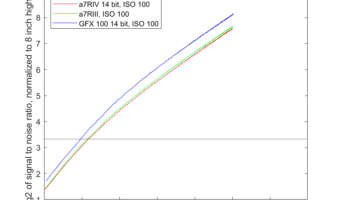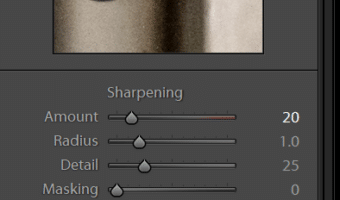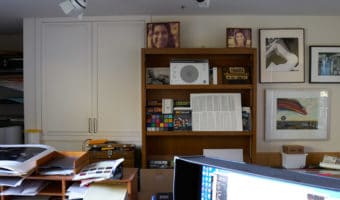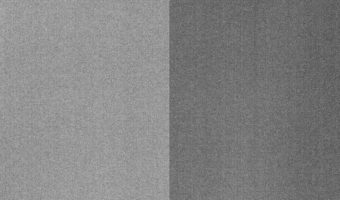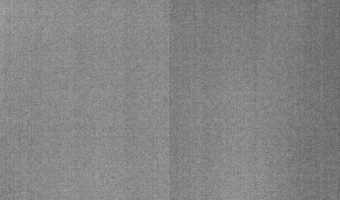I’ve been posting shadow noise curves for a while. Here’s an example: There’s a lot to unpack, but for now, just concentrate on the following: The curves are normalized to standard sized prints; differences in camera resolution are normalized out Higher y-axis values are better — they mean less visible noise The further to the… [Read More]
a7RIV, a7RIII shadow noise w/ sharpening and noise reduction
This is one in a series of posts on the Sony alpha 7 R Mark IV (aka a7RIV). You should be able to find all the posts about that camera in the Category List on the right sidebar, below the Articles widget. There’s a drop-down menu there that you can use to get to all… [Read More]
Sony a9II ISO behavior
This is the seventh in a series of posts about the Sony alpha 9 Mark II, aka the a9II. The series starts here. You can find other posts in this series by using the category list on the right, and selecting “a9II”. As you’ve seen in some of the earlier posts in this series on… [Read More]
Sony a9II fixed-pattern read noise — long exposures
This is the sixth in a series of posts about the Sony alpha 9 Mark II, aka the a9II. The series starts here. You can find other posts in this series by using the category list on the right, and selecting “a9II”. In the previous post, I averaged 128 ISO 1000 1/1000 second shots, and… [Read More]
Sony a9II fixed-pattern read noise — short exposures
This is the fifth in a series of posts about the Sony alpha 9 Mark II, aka the a9II. The series starts here. You can find other posts in this series by using the category list on the right, and selecting “a9II”. I averaged 128 ISO 1000 1/1000 second dark-field shots using EFCS and uncompressed… [Read More]
- « Previous Page
- 1
- …
- 116
- 117
- 118
- 119
- 120
- …
- 577
- Next Page »
